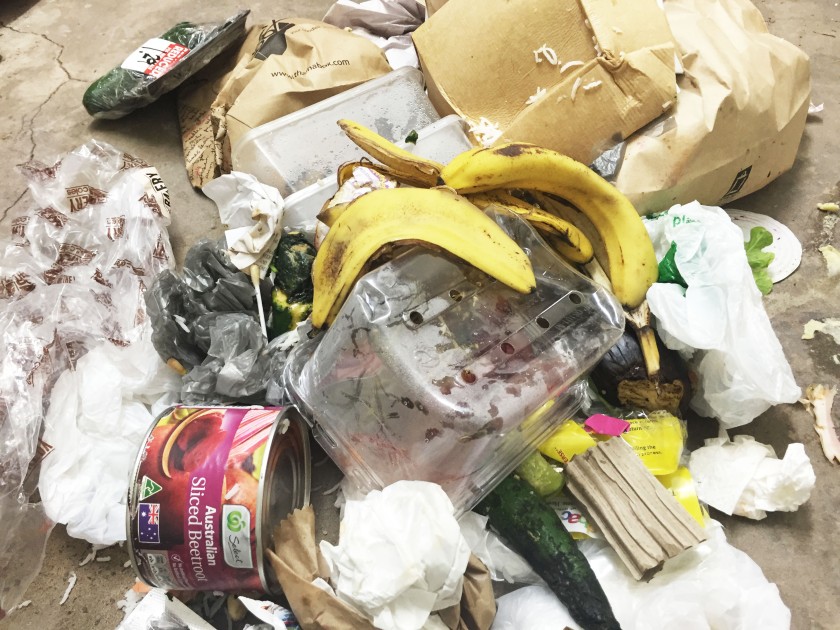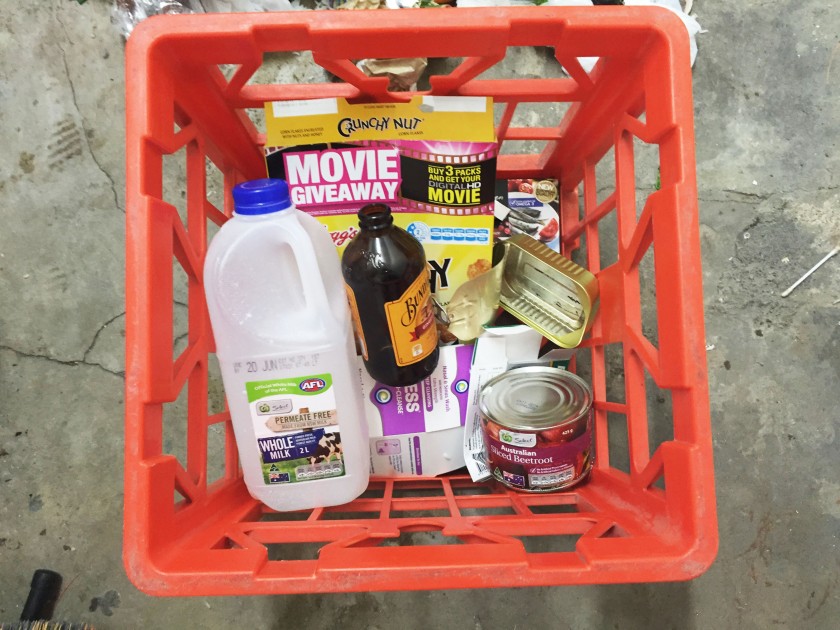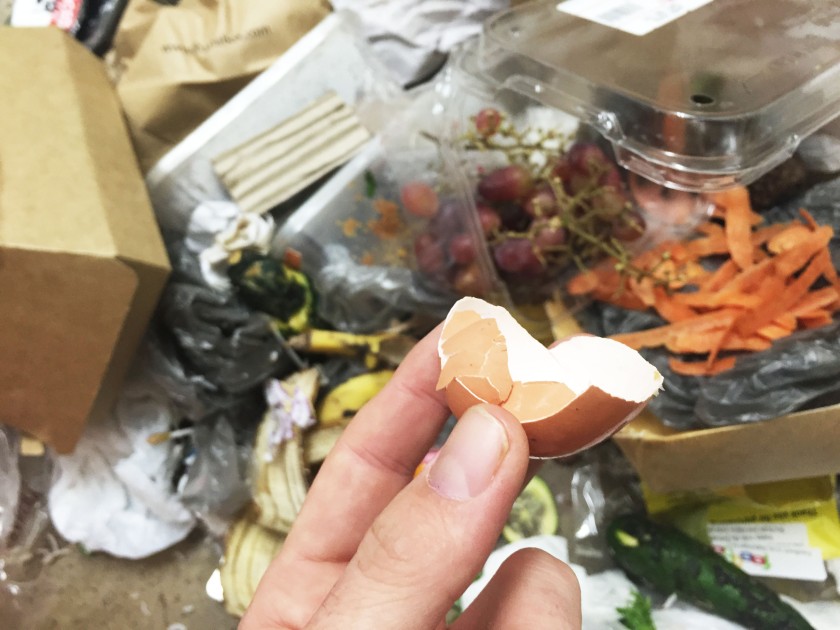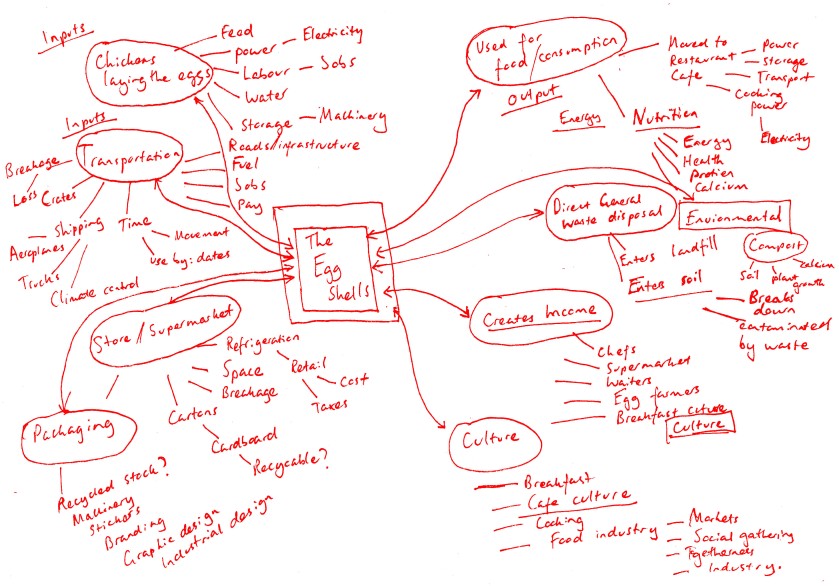I have just overturned my kitchen bin. What a sight. I did so to conduct an audit of my daily waste.
So a little about the bin; this bin fills up once a day, needing emptying in the late evening. The bin is located in the kitchen, to which all members of the house have access. Given its location, the bin is used by all 4 members of the household — all of which are in their early 20s, with similar lifestyles, interests, and daily routines to my own. I have also included a milk crate that the household uses for recyclables within the audit. It has been considered that by auditing a small group of people of a similar age group and demographic, I am able achieve some sort of a standard, or mean, that perhaps allows a broader scope than monitoring only my own, personal waste. Below are some images of the overturned bin and the milk crate of recyclables investigated:


In overturning the bin, I found that much of the waste was organic matter — at least 50%. Much of the waste within the general waste bin was also recyclable — which was quite disturbing — with a number of plastic containers, tins and cardboards that could have been easily rinsed and recycled.
I found quite a number of eggshells within the waste — which I thought could have quite an interesting lifecycle. I found the mapping techniques used by Lucas Ihlein in his project titled ‘Environmental audit’, particularly useful for investigating this life cycle of the eggshells. Some of these mind-mapping techniques are offered on the Environmental audit website and also in the book from the Museum of Contemporary art titled ‘In the balance: Art for a changing world’ (Kent 2010).
I began using these mapping techniques adopted by Ihlein in my own work, allowing for a visual representation of an eggshell’s life cycle:


I was able to dissect the visual map and separate the eggshells’s life cycle into inputs and outpts/outcomes — that is, I was able to determine what is required to create and facilitate for the eggs — and then, what the outcomes or end results of that egg are. This was particularly useful for identifying ways in which the organic matter locates itself physically, socially, economically and even temporally. This sort of scope could certainly allow a platform for implementing change.
As I figured that most of my own eggshells were destined for landfill, I decided to do some brief research on eggshells in soil. I soon found that when added to composts, eggshells increase the calcium content of the soil. This calcium-rich soil promotes plant growth. JF Loneragan and K Snowball published a journal article in 1969 which tested the yield of a range of plant matter in relation to soil calcium content. One such section of their findings states that “Increasing solution calcium concentrations from 0.3 to 2.5um increased the yield (plant matter growth) greatly” (Loneragan & Snowball 1969).
This is certainly relevant for the Wealth for waste initiative, as it suggests that we are able to facilitate additional outcomes or products of organic materials by seeking alternative disposal methods. The lifeline and mapping techniques explored, offer a means of identifying and targeting specific areas for action.
References:
Ihlien, L. 2010 – Environmental audit, Sydney, viewed 6 June 2016, <http://www.environmental-audit.net/page/2/>.
Kent, R. 2010, In the balance: Art for a changing world, Museum of Contemporary Art.
Loneragan, J. & Snowball, K. 1969, “Calcium requirements of plants”, Crop and Pasture Science, vol. 20, no. 3, pp. 465-478.

Interesting take on mapping the life cycle of the eggshell! I like how you also considered its impact on people’s life, both culturally and economically.
LikeLike